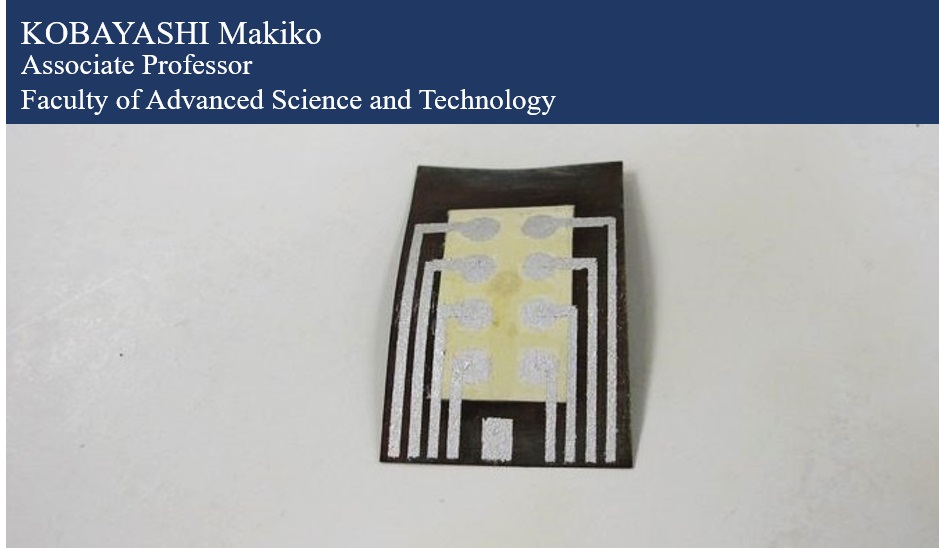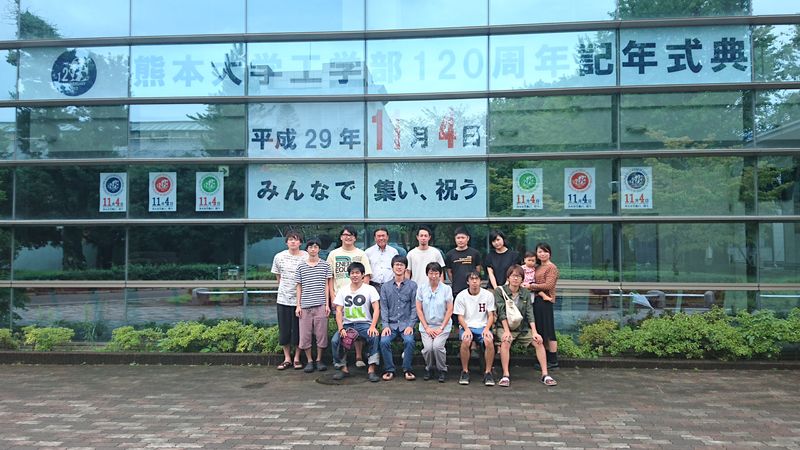High performance, inexpensive and compact cutting-edge sensors developed at KU


Associate Professor Kobayashi and her team are conducting research on compact ultrasonic sensors that can operate at high temperatures using new materials. We interviewed Prof. Kobayashi to find out more about how she is enhancing the future of Japanese manufacturing using cutting-edge sensors.
Cutting-edge sensors that support Industry 4.0 and Society 5.0
Interviewer (◆ hereafter): Please tell us about your research!
Prof. Kobayashi: My research focuses on the development of sensors that can operate in severe environments such as high temperature conditions. In power plants, for instance, power generation is periodically stopped for inspections in order to supply electricity safely and stably. Due to these high temperatures, inspections cannot be performed while the plant is operational. However, if sensors can check the power generation and machinery status, even at high temperatures, inspections can be performed without interrupting power generation. In addition, it will be easier to prevent accidents since inspections can be carried out continuously. It kills two birds with one stone, doesn't it?
Sensors that can withstand severe environments already exist. However, other challenges such as being too large or too expensive must be solved. Therefore, we have developed compact and economical sensors that can inspect spaces too narrow or small for a person to enter. Additionally, many sensors can be installed. I believe that compact, inexpensive sensors that can operate anywhere will support the coming Industry 4.0 and Society 5.0.
◆: That sounds amazing! Did it take a long time to develop these sensors?
Prof. Kobayashi: Yes, it is a long story. I became interested in sensors as a doctoral student studying at a research institute. My colleagues and I wanted to observe what was occurring when developing new materials. The generative mechanism of a new material can only be determined during production, but observing the actual process of material production is extremely difficult in a high temperature or high pressure environment. Therefore, we began to develop sensors that enabled us to watch what was happening in real time. That was about 20 years ago.
At that time, computers had marginal performance and limited storage capacity, which quickly became full. Today’s computers have improved performance with plenty of storage capacity. In fact, data can be stored in the cloud. The environment in which the developed sensors can be utilized has become a reality. If our sensors can be utilized in Japanese manufacturing factories, they may enhance the competitiveness of Japanese companies by enabling real-time detection of quality and abnormalities.
We have also launched a start-up company to realize broad utilization of these sensors. Although there are many challenges such as financing, stable supply chain, and quality assurance, I am working hard. My colleagues and I have high ambitions and will continue to launch products that are useful to society.

Overturning predictions and making the impossible possible
◆: Which part of research attracts you the most?
Prof. Kobayashi: I find making impossible possible fascinating. That is, I am captivated by overturning predictions. You can realize and measure things that you thought to be impossible by exploring a method to make it feasible. That’s what I find really interesting. Sometimes, I feel frustrated because it is not easy to convince people that we have achieved the impossible.
◆: I heard that you are also a mother.
Prof. Kobayashi: Yes! My child is almost three years old. I often feel it is really hard for women to continue research after becoming a parent. My main challenge is balancing my time and efficiently concentrating on my research.
Ambition to clarify the mysterious principle of materials
◆: What is your plan for your future research?
Prof. Kobayashi: To date, I have been mainly working on applied research. However, I also want to clarify the principle of why our sensor material exerts such excellent properties. This sensor material is one of the reasons why many people doubt its performance. People tend to think that, “This material cannot exhibit such excellent characteristics.” This is reasonable considering existing theories. Why the material exhibits such great properties is still poorly understood.
We are finally starting to capture indirect evidence, but a considerable amount of time, money, technology, and research equipment are necessary to get to the truth. Our research and development has involved a small number of people until now, but I think it would be nice if we could collaborate with specialists in various fields to clarify the principle for the outstanding material property. My dream is to develop better materials using the unveiled principles.
Try to think what you can do in a finite length of time
◆: Please give a message to our students!
Prof. Kobayashi: Time has passed quickly since we started developing sensors 20 years ago. Now that we have realized practical applications, I would like to clarify the principle, but I don’t know if we will achieve the results. I want students to use their precious time effectively since time is finite.
I think the important thing is “to make your best efforts with the current situation.” Complaining about difficulties or being unsuccessful doesn’t improve the situation. I want you to switch your mindset to think about the best thing you can do now. Currently, the use of laboratories is restricted to prevent the spread of the COVID-19 pandemic. Even under this situation, you can summarize what you know thus far to prepare your thesis or acquire new knowledge. Try to come up with a solution by yourself, even under unexpected circumstances. I want you to be a person who can thrive in unexpected situations!

Members of the Laboratory
